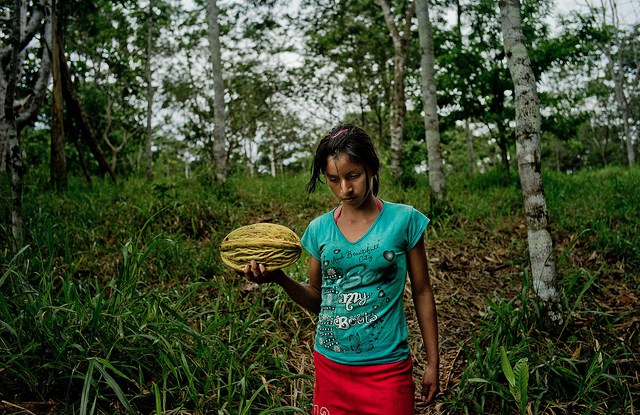
BOGOR, Indonesia – Market-based instruments to conserve ecosystems and biodiversity are becoming increasingly popular over regulatory instruments, but the term is so broad and misleading that it is nearly impossible for policy makers to draw conclusions from them, according to a new study.
The study by researchers at the Center for International Forestry Research (CIFOR) and the Institute for Sustainable Development and International Relations (IDDRI) analyzed 106 peer-reviewed scientific articles on such market-based instruments (MBIs) and found that many so-called MBIs described had little to do with markets.
For example, Payments for Ecosystem Services (PES), a widely used instrument categorized as an MBI, often end up being government payments to service providers, acting more as “a subsidy in disguise” rather than a market mechanism, in which providers of ecosystem services would receive funds from beneficiaries, the study notes.
Among the articles, 50 different names were given to designate various types of MBIs, yet only 10 percent of articles proposed some sort of typology to clarify and organize the diversity, usually in a very simple way.
“You have such a great diversity of so-called market-based instruments, and the term is in itself confusing because it triggers a lot of different understandings and interpretations,” said Romain Pirard, a CIFOR scientist and the study’s lead author.
“At the same time there are great expectations for MBIs because they are seen as new and innovative,” he said.
IDEOLOGY OVER SCIENCE?
This confusion has stalled progress on policy in this area, causing delays in international fora notably for the negotiations on innovative financial mechanisms for the implementation of the Aichi targets of the Convention on Biological Diversity. Several Latin American countries, for example, have voiced their opposition to the commodification of nature, when in fact the PES instruments used in those countries rarely rely on markets and are very similar to previous attempts at conservation through government regulation or donor programs.
“MBIs are trendy in the context of neoliberalism. There is a lot of support in the rolling back of the state. People think it’s better if the state has fewer powers, so these so-called MBIs have received a lot of attention,” Pirard said.
“But when you look at these instruments in more detail, most don’t actually involve a rolling back of the state.”
The concept of making forests valuable in monetary terms has gathered momentum in recent years, with high-profile figures voicing their support. The Prince’s Rainforest Project, an initiative by Prince Charles of the United Kingdom to slow deforestation, holds the motto: “Working to make the forests worth more alive than dead.” Meanwhile, the European Union is increasingly favoring MBIs and has integrated them in several of its action plans and sustainable job-growth instruments.
You may have several evaluations about PES, but in fact people are evaluating very different things
But of the 106 articles studied, a quarter did not specifically mention and analyze the economic rationale underlying the rapid emergence of MBIs as a better alternative to regulatory instruments.
In these cases, the superiority of MBIs is merely assumed, and their promotion as a policy instrument is likely driven by ideology rather than scientific evidence, the study states.
A NEW APPROACH
The study’s authors aimed to categorize the MBIs mentioned in the articles under six descriptions that better reflect their nature—direct markets, tradable agreements, reverse auctions, Coasean-type agreements, regulatory price changes and voluntary price agreements. A quarter of the articles mentioned only MBIs and “incentive mechanisms” without further definition, and therefore could not be categorized.
But even this typology, previously published by the lead author, the study acknowledges, is limited. In many cases, instruments were multidimensional and could be slotted into several categories.
The study also found that scientists used so many different methodologies in their studies of MBIs that it was nearly impossible to draw any comparisons, describing the lack of “a uniting framework that would allow researchers and policy makers to draw robust lessons from a common set of methods and associated results.”
Among methodologies were local case studies and modelling or simulation exercises. But 40 percent of articles used theoretical discourse—the most common methodology—where empirical data were not at the center of the analysis.
An earlier study co-authored by Pirard described how PES was initially designed as an MBI through negotiated agreements between the provider of an ecosystem service and a user, known as Coasean-type agreements, but developed in a more regulatory way.
PES now usually involves intermediaries or governments to pay for services, often in highly regulated environments and in many cases leaning toward subsidies.
In Costa Rica, for example, communities are paid a certain stipend by the government per hectare if they conserve forest, carry out sustainable forestry management or reforest by planting trees under a PES system. This is essentially a subsidy and one can argue that it has nothing to do with markets.
“PES has also become such a broad term it has become somewhat useless,” Pirard said.
“You may have several evaluations about PES, but in fact people are evaluating very different things.”
For more information about the topics of this research, please contact Romain Pirard at r.pirard@cgiar.org.
We want you to share Forests News content, which is licensed under Creative Commons Attribution-NonCommercial-ShareAlike 4.0 International (CC BY-NC-SA 4.0). This means you are free to redistribute our material for non-commercial purposes. All we ask is that you give Forests News appropriate credit and link to the original Forests News content, indicate if changes were made, and distribute your contributions under the same Creative Commons license. You must notify Forests News if you repost, reprint or reuse our materials by contacting forestsnews@cifor-icraf.org.

